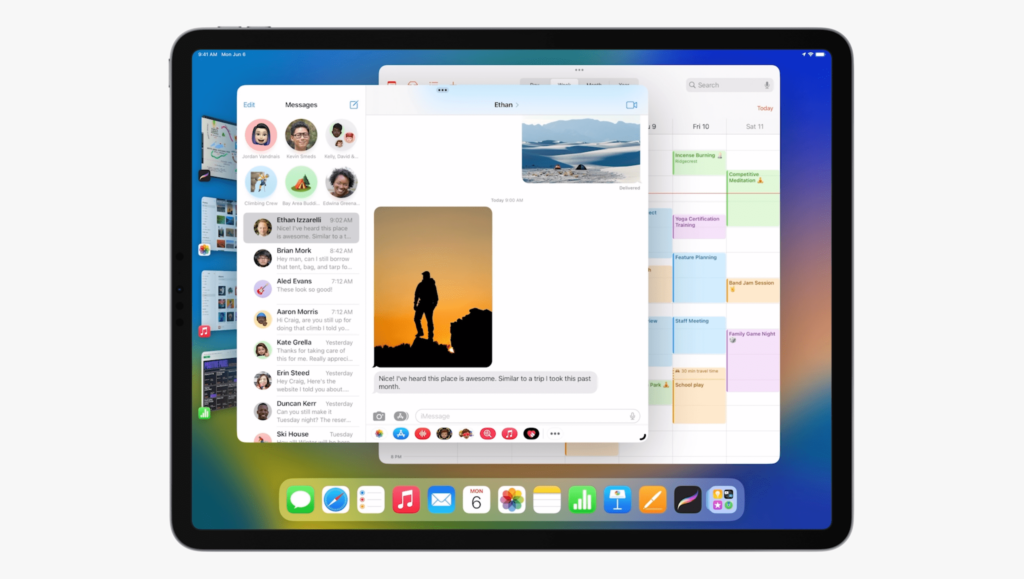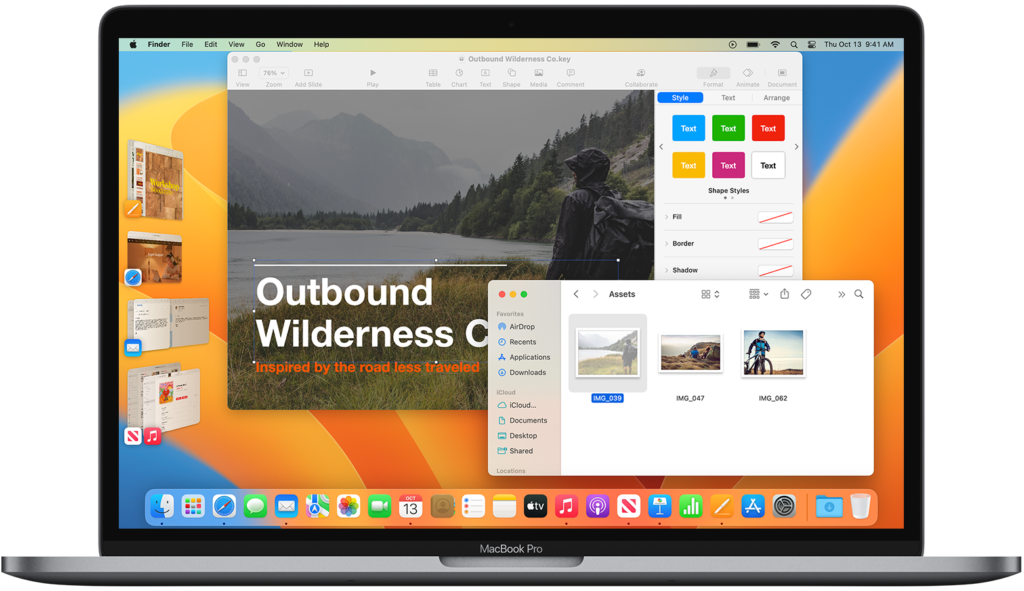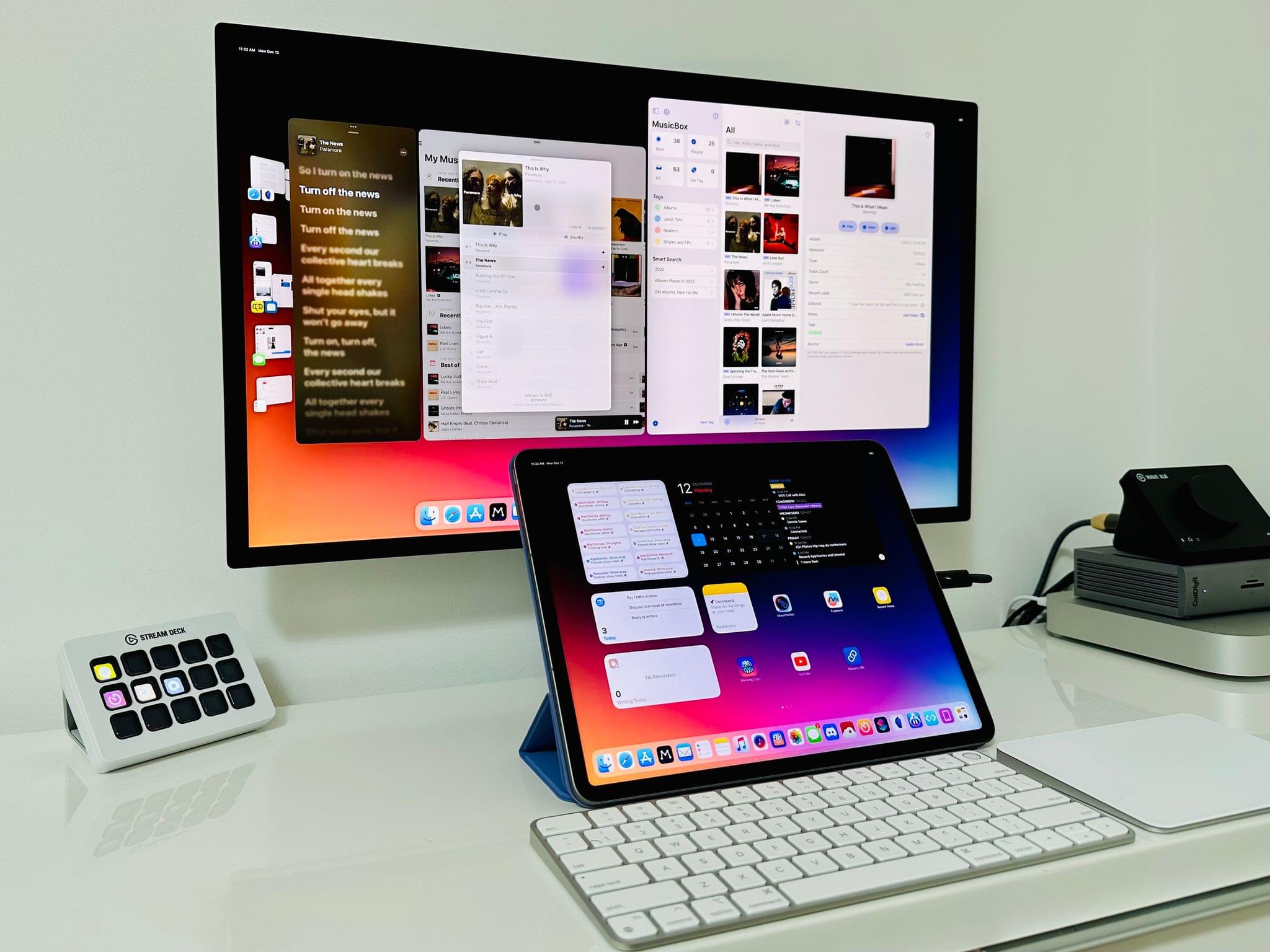Apple’s Stage Manager feature is crafted to tackle multitasking challenges on iPad and Mac. This functionality enables a central app to stay open on the screen, while all other active apps neatly organize as thumbnails on the side for quick and seamless switching. Should your iPad have the capability to connect to an external display, you can extend Stage Manager across both screens. This grants you the ability to effortlessly drag and drop apps and windows between your iPad and the secondary monitor. Here’s a guide on how to effectively utilize Stage Manager on both iPad and Mac.
Digital clutter is a common woe for users navigating the vast landscape of apps and windows on their iPad and Mac devices. In this article, we’ll explore how Stage Manager, a powerful multitasking tool, can revolutionize your digital workspace.
Understanding Stage Manager
What is Stage Manager?
Stage Manager is a versatile multitasking application designed to streamline your digital experience on both iPad and Mac. It allows users to manage and organize open apps and windows efficiently, reducing the chaos associated with cluttered desktops.
Setting Up Stage Manager on iPad and Mac
Setting up Stage Manager is a breeze. Whether you’re using an iPad or a Mac, follow these simple steps to get started:
- Download and install Stage Manager from the App Store or Mac App Store.
- Launch the application and grant the necessary permissions.
- Customize your workspace by arranging apps and windows to suit your workflow.
Customizing Your Workspace
Stage Manager empowers users to customize their digital workspace according to their preferences. With intuitive drag-and-drop features, you can effortlessly organize apps, creating a clutter-free environment that enhances productivity.
Stage Manager on iPad
Stage Manager on iPad refers to a software or application designed to assist with the management of live performances, events, or presentations. It is often used in the context of theatrical productions, concerts, or other live shows. The iPad provides mobility, allowing Stage Managers to move around the venue, communicate with team members, and make real-time updates without being tied to a stationary workstation. The user interface is optimized for touch input, making it intuitive for users to navigate through the app and manage various aspects of the production.
Features:
- Scheduling: Stage Manager apps on iPad often include tools for creating and managing schedules for rehearsals, performances, and other related events.
- Communication: These apps may facilitate communication among the production team, allowing for quick updates, notes, and changes to be shared.
- Task Management: Stage Managers can use these apps to assign tasks, track progress, and ensure that everyone involved in the production is on the same page.
- Script Integration: Some Stage Manager apps allow for the integration of scripts, cues, and other production-related documents.
One standout feature of Stage Manager is its seamless integration with Split View on iPad. This allows users to multitask effectively by running two apps side by side. To activate Split View:
- Swipe up from the bottom to open the Dock.
- Drag an app from the Dock to the left or right edge of the screen.

Stage Manager on Mac
Stage Manager on Mac refers to similar software but specifically designed for use on macOS, the operating system used on Apple Macintosh computers. While iPad users enjoy the benefits of Split View, Mac users can take advantage of Stage Manager’s advanced multitasking features. Manage multiple windows effortlessly, switching between tasks with ease. You can also turn off Stage Manager completely by opening Control Center and deselecting the Stage Manager icon. After doing this, only your active windows will be displayed.
Features:
- Advanced Functionality: Stage Manager applications on Mac may offer more advanced features compared to their iPad counterparts, taking advantage of the more powerful hardware and larger screen.
- Multitasking: The Mac version may allow for more extensive multitasking, enabling Stage Managers to work on multiple aspects of the production simultaneously.
- Compatibility: Some Mac-based Stage Manager software might have additional compatibility with professional audio, lighting, and projection systems commonly used in live performances.
The larger screen of a Mac computer provides a more expansive workspace, allowing Stage Managers to view and manipulate multiple elements of the production simultaneously. Stage Manager software on Mac may integrate more seamlessly with other professional software tools commonly used in the entertainment industry.

Optimizing Performance
To ensure optimal performance while multitasking, consider these tips:
- Close unnecessary apps and windows.
- Regularly update Stage Manager for the latest performance enhancements.
Keyboard Shortcuts for Efficient Multitasking
Stage Manager introduces a set of keyboard shortcuts that can significantly boost your multitasking capabilities. Memorize these shortcuts to navigate your digital workspace with speed and precision.
- Cmd + Option + S: Open Stage Manager.
- Cmd + Shift + D: Toggle Split View on iPad.
- Cmd + Option + W: Close all windows except the active one.
Advanced Tips for Power Users
For users seeking to elevate their multitasking game, here are some advanced tips:
- Utilize Stage Manager alongside note-taking and project management apps.
- Experiment with different customization options to find your ideal setup.
Common Multitasking Challenges and Solutions
Despite its efficiency, users may encounter challenges while using Stage Manager. Here are solutions to common issues:
- If apps freeze, force close them and restart Stage Manager.
- For compatibility issues, ensure your device meets the system requirements.
User Testimonials
Don’t just take our word for it! Hear from users who transformed their digital workspace with Stage Manager:
- “Stage Manager has made juggling multiple tasks a breeze. I can’t imagine going back to the cluttered chaos I had before!
- “The customizable workspace is a game-changer. Everything I need is right at my fingertips.”
Comparing Stage Manager with Other Tools
In the competitive landscape of multitasking tools, Stage Manager stands out for its user-friendly interface and robust features. While other tools may offer similar functionality, Stage Manager’s simplicity and efficiency make it a top choice for users seeking a clutter-free experience.
Future Updates and Developments
As technology evolves, so does Stage Manager. Stay tuned for future updates and exciting developments that promise to enhance your digital multitasking experience.
Conclusion
Decluttering your digital workspace is no longer a daunting task, thanks to Stage Manager. Embrace a clutter-free environment on your iPad and Mac, and watch your productivity soar. Simplify your digital life and make multitasking a breeze with Stage Manager.
Click Here to read about How to Restore Old Pictures With Photoshop in 2024
FAQs
- What devices are compatible with Stage Manager?
- Stage Manager is compatible with iPad models running iOS 13 and later, as well as Mac devices with macOS Catalina and newer versions.
- Can I use Stage Manager with third-party apps?
- Yes, Stage Manager seamlessly integrates with most third-party apps, allowing you to manage them alongside native applications.
- How does Stage Manager impact battery life?
- Stage Manager is designed to be resource-efficient, minimizing its impact on battery life. Users can enjoy enhanced multitasking without compromising device performance.
- Is Stage Manager user-friendly for beginners?
- Absolutely! Stage Manager’s intuitive interface makes it easy for beginners to customize their workspace and navigate the application effortlessly.
- Can I disable Stage Manager if I want to go back to the default setup?
- Yes, users can disable Stage Manager at any time. Your device will revert to its default configuration, preserving your original setup.
